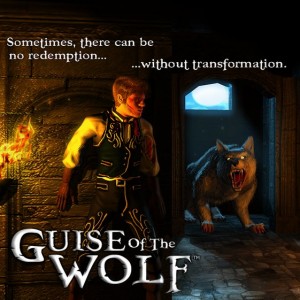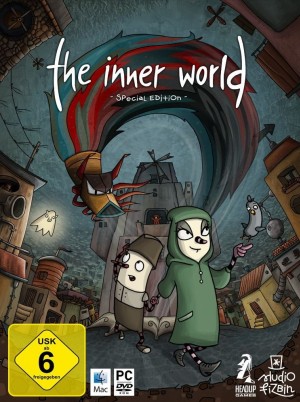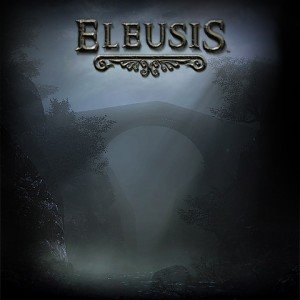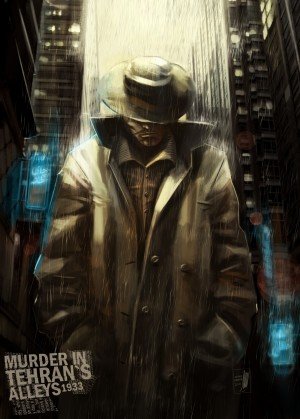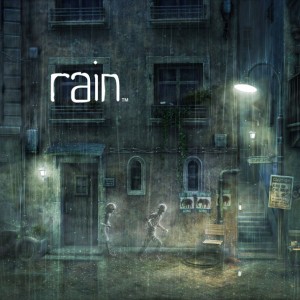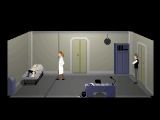Review for Guise of the Wolf
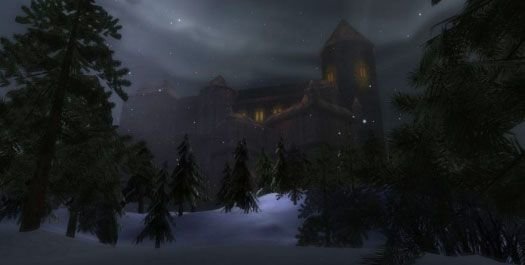
They say if you can’t say anything nice, don’t say anything at all. Okay, here goes:
There’s a cool idea or two buried in Guise of the Wolf. These ideas are half-formed, their potential is unmet, and they are buried under the weight of a truly awful game, but they are there. The idea of having to transform into a wolf in order to solve puzzles is neat, even if it never amounts to much here. Also, the music is pretty good.
There, now that that’s out of the way, let’s get our hands dirty:
Guise of the Wolf would be legendarily bad if it wasn’t so forgettable. It has been a matter of hours since I finished it and I can already feel it seeping away from me. But I’ll do my best to recount the details: You play as Dominik, an alchemist with one line of voiced dialogue in the game. On his way to a castle (where, I don’t know, it’s just “the castle”) to fulfill the summons of the Count, Dominik’s carriage is waylaid and overturned. Dominik is knocked out. When he comes to, his traveling companion is dead and he has been wounded. You know, like, bitten. This is important.
Finally meeting with the Count, Dominik learns that the kingdom has lately been ravaged by a cursed beast. They never call it a werewolf, much in the same way that people in zombie movies never say “zombie.” But we all know that’s what it is. The Count needs Dominik’s help to stop the beast by creating a potion that can counter the curse. Funny then, that Dominik doesn’t actually know how to make the potion. I guess the Count didn’t do his research. Yet it seems that only he is capable of finding the list of ingredients, gathering them from various tables around the castle, throwing them in a pot, and stirring. Alchemy is truly an arcane, esoteric art.
Of course, it turns out that Dominik has been bitten by the wolf (told you it was important!) and is cursed himself. Conveniently, within minutes of this discovery, the game provides you with a potion that restricts the curse and gives you control over when the transformation occurs, thereby removing the one interesting part of werewolf mythology.
There are other characters in the game, ostensibly. One of the first faces you see is that of Isabel, the mysterious woman in red who greets you once you’ve healed from your initial injuries. I say mysterious because I honestly don’t know anything about her. She appears a grand total of three times, to deliver one or two lines of dialogue, and then move on, yet she’s treated like the emotional center of the plot. Filch, a prisoner in the castle who seems to know more about the curse than anyone, exists as a human exposition machine, spouting backstory and little else. There’s no humor, no depth, nothing but soulless character models offering commentary that is so skeletal and sparse that it actually ends up confusing you even more. If you’re like me, after each bit of new information was revealed you’ll find yourself going “Wait, who? What? Who is this person? Why am I here? Also, I don’t care.”
You explore the castle and its grounds in first-person, using standard WASD controls. Within the game’s tight environments you have the freedom to move wherever you want. As a human you can walk around, pick up items, jump, and pickpocket (more on that later). By stepping into very particularly placed “auras” of moonlight (and only there, despite the fact that the entire game takes place during a full moon, often in outdoor areas drenched in said moonlight), you can transform into your wolf form. This allows you to run a bit faster, jump a bit further, and swipe with your claws. This can be used to attack guards, but in reality it’s really just for swiping open locked doors. The running and jumping comes into play during some light platforming sprinkled throughout the game – nothing too taxing or challenging.
Occasionally you’ll come across a gap or a barred door that can only be overcome in wolf form. There will invariably be a moonlight aura nearby, meaning that the solution to these “puzzles” is always “run to moonlight, run to door or gap, attack or jump, transform back.” Thus the potentially interesting ability to become a werewolf is reduced to a bland and repetitive exercise.
While in wolf form the guards of the castle will attack you on sight. In a good game this would mean carefully choosing when and where to transform in order to avoid guards and prevent them from discovering your secret. But not here: they literally cannot move from their positions, as if their feet have been nailed to the ground. Instead, they can only attack when you pass close to them. Besides looking hilariously awkward, this also makes avoiding them trivial.
If you do choose to fight back and kill them, the game hardly seems to notice. If two guards are standing on either side of a door and you kill one, then transform back into a human, you can speak to the other guard as if nothing at all happened. The game gives you the ability to kill almost any NPC and then doesn’t pay attention when you do. In one case, I killed a guard who had been refusing to let me pass without a bribe. I struck him down, transformed back into a human, and stepped over his body to get to the door. When I opened the door, he magically resurrected in order to tell me that I owed him 200 gold coins in order to pass.
In other words, the entire wolf transformation mechanic, which is the one of the major selling points here, amounts to very little in the way of actual gameplay. The rest of the game involves collecting ingredients for alchemical potions – a solid setup for an adventure game, assuming that the process of collecting those ingredients is engaging. In Guise of the Wolf – you probably know where this is going – it’s painfully boring and uninspired. Ingredients are strewn about the castle seemingly without rhyme or reason. Everything seems to be sitting on cabinet shelves or out in the open on tables. Ingredients almost never require puzzle-solving to find, and all can be found just by clicking around in every room. Once you’ve collected all of the ingredients needed for a potion, you just dump them into cauldron and you’re done. Hooray.
Beyond that, there are only a few true puzzles in the game, and they are almost all frustrating or otherwise unsatisfying. I spent an hour (of a three-hour total playthrough) attempting to solve the first real puzzle I encountered. I needed to find the key to open a locked door, and I scoured each room available to me ten or more times trying to see if it was tucked away in some corner. No luck. (Spoilers to the end of this paragraph, if for some reason you care about spoiling Guise of the Wolf.) It turns out I had to pickpocket one of the guards by crouching behind him and interacting with him. The game never mentions that you have the ability to pickpocket. The guard has exactly the same character model as every other guard in the game; there is nothing to distinguish him as special. He doesn’t have a key on his belt or anything. There are no clues or any sort of nudge toward pickpocketing him, which is moot because the game never tells you that you can do it in the first place. ARGH.
The most common obstacle you’ll come across (besides locked doors) are locked chests. Each time you open one, you’ll play through the same minigame in which you have four buttons that rotate one or two of the four tumblers in the lock. As a one-time puzzle, this could have been mildly amusing. Instead it comes back over, and over, and over again, never getting any harder or less tedious. It’s probably the most competent puzzle in the game, but by the midpoint I was cursing every time I saw a chest because that meant five minutes of randomly clicking on buttons to rotate tumblers until I happened on the solution.
The final gameplay element is the presence of the other wolf, the one that bit you. At scripted moments throughout the game, the beast will ambush and chase you. In these sequences there is only ever one correct way to survive, usually by running away and pulling a lever that closes a door between you and the beast. Any deviation from the correct solution is instant death – and I mean any. Turn off the “correct” path for a second and the game will lock you in place, unable to do anything but watch as the wolf slides toward you (his running animation is practically non-existent). This means there’s no sense of real tension, no feeling of victory when you finally do survive the encounter. It’s more like you’re an actor without a script being yelled at by a tyrannical director for missing your mark – a mark that was never pointed out to you in the first place.
Because so little of the actual intended gameplay works, it should come as no surprise that Guise of the Wolf is riddled with bugs and rough edges. Many objects, such as some tables, lack collision detection, meaning you can walk right through them. At one point I picked up an important item, died at the hands of the beast, and then reloaded into the game at the previous checkpoint (which are thankfully fairly generous), only to find that I still had the item in my inventory. I was able to bypass that entire puzzle without successfully completing it due to this bug. And of course the game crashed on me twice during my short time with it.
So no, this is not a polished game. In addition to its rampant glitches, the game is just plain ugly and unfinished. There are literally no graphical options. Even the resolution is fixed. You’d better hope your monitor supports it, because there’s no changing it. Visually, it would have looked dated a decade ago, with simplistic character models that lack almost all animation, blocky environments, and textures that seemingly all make use of the same ugly, melted Photoshop filter. The entire castle seems static, other than a bit of snowfall, and the only real environmental detail seems to be liberal scattering of barrels throughout the scenes. Otherwise, most rooms consist of little more than walls, floors, and (locked) doors. Characters are incapable of walking from spot to spot, and as such teleport around during brief screen fades. The list goes on. The one bright spot is the music, which is actually pretty nice. The moody, gothic score fits the game that Guise of the Wolf is trying to be.
In case you couldn’t tell by now, Guise of the Wolf is awful. It’s not worth your money. In fact, it’s insulting that players are being charged money for it. The game feels like a student project, not a commercial release. It is often broken, and what does “work” is nonsensical, amateurish, and worst of all, boring. At no point did I feel an ounce of satisfaction from solving a puzzle or overcoming a challenge. I don’t particularly enjoy dragging a game through the mud for being subpar, but in this case I don’t want there to be any ambiguity: Don’t buy Guise of the Wolf. It’s really bad.


